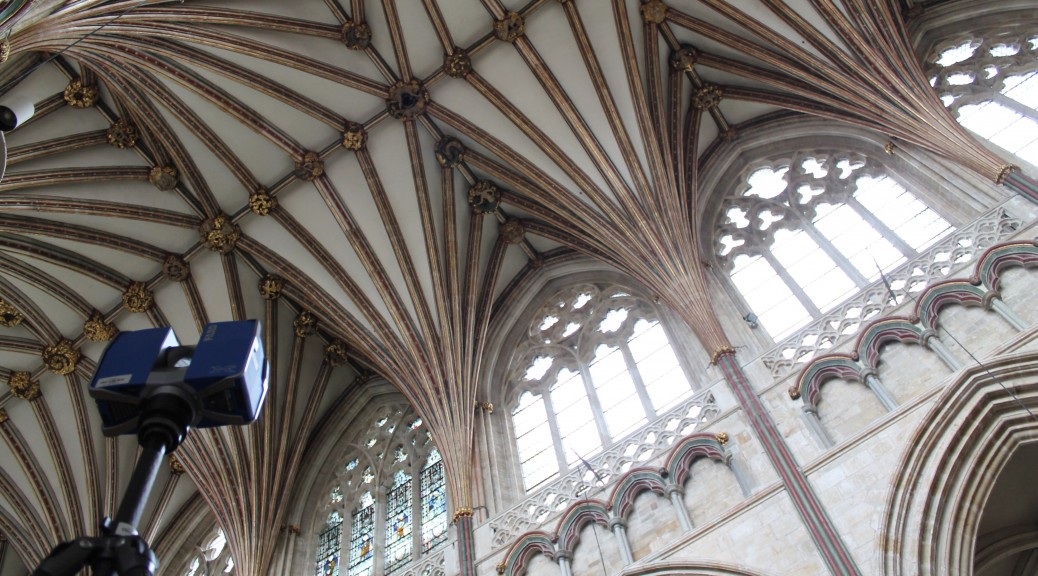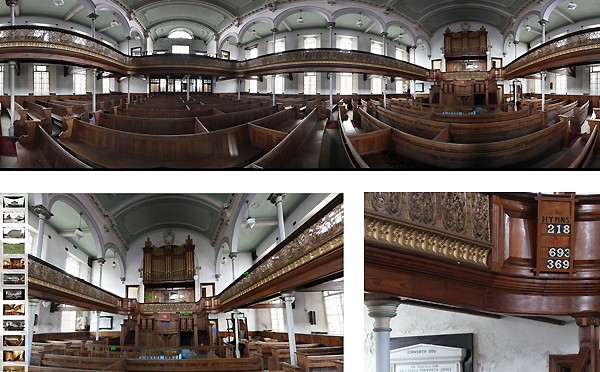On Wednesday 30th March we travelled to Devon to collect more survey data from two sites; Exeter Cathedral and Ottery St Mary Church. We spent two days at Exeter and will spend a final day at Ottery.

Surprisingly, we were joined by a team at Exeter Cathedral who were also there to create a model of it. Whereas we were using digital scanning techniques to produce a highly accurate model of the vaults at Exeter, they were using Lego to create a scale model within the cathedral. You can follow their progress here. We were able to scan the uninterrupted length of high vaults along the nave and choir, the central porch of the screen facade, the crossing, the miniature vaults in the pulpitum and those of the sedilia. These miniature vaults are particularly interesting to us, being documented designs by Thomas of Witney, a mason who also worked at Wells Cathedral, a site we’ve already scanned. At both Exeter and Wells, Witney experimented with the use of liernes, additional decorative ribs, of which Exeter’s are some of the earliest surviving examples. With help from the cathedral archaeologist, John Allan, we were able to identify additional sites to survey, such as the site of the former North walk of the cloister, which was situated between the external buttressing to the south of the nave.
The trip to Exeter was funded by the University of Liverpool’s Interdisciplinary Network Fund.


